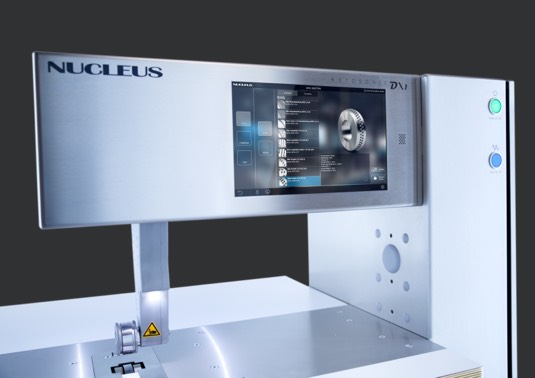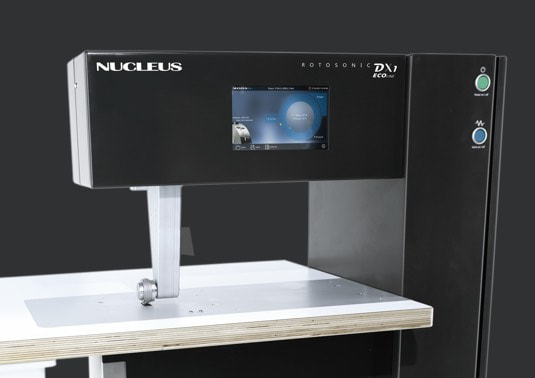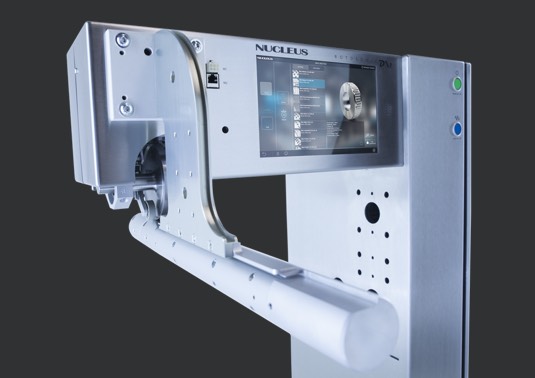Fundamentals of ultrasonic
Ultrasonic welding means the cohesive bonding of thermoplastic fabrics through internal friction, heating and fusion of the material. The intensity of the welding is determined by the three parameters of: heat output, pressure and time.
The “Rotosonic DX1” from Nucleus GmbH is offered as a standardized machine with rotating sonotrode and anvil wheel.
Welding Principle:
1. Converting the low frequency line voltage of 50 Hz (oscillations per second) by the ultrasonic generator into high frequency of electrical energy of 35 kHz. This ultrasound frequency is barely audible to the human ear.
2. The downstream equipment converter converts the electrical energy into mechanical vibrations.
3. The mechanical vibrations are transmitted to the acoustic transformer (booster). It ensures that the amplitude of the converter is optimally adjusted to the sonotrode.
4. The sonotrode now oscillates at 35 kHz against the anvil wheel. The molecular and boundary surface friction generates heat. The material starts to molecular soften in the uniting zone and forms a sound barrier due to the plasticized and strongly damping plastic layer, which leads to a very intensive melting of the plastic. The reaction accelerates automatically, as an increasing proportion of the vibration energy and is converted into heat. The simultaneous pressure exerted by the anvil wheel lowering unit reinforces the welded connection in the weld metal.
5. In addition to the following cooling phase, the seam connection can be additionally reinforced by the use of a post press puller (contact pressure up to 5 bar).
Ultrasonic welding machines
Your personal sales partner
You can find our sales partners in many countries in Europe and North America. If you have any questions, please do not hesitate to contact us or our sales partners. We also prepare welding samples for you.



